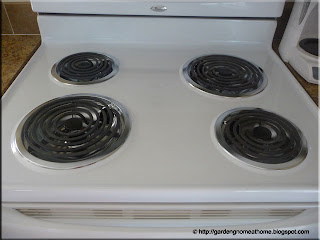Many folk suffer from dust mite allergies more specifically from dust mite droppings. Dust mites are microscopic insects that live in our home feeding off of dead skin. The problem is dead skin accumulates in dust as a normal part of our daily activity because we are always shedding skin. In homes with carpeting and upholstered furniture or in rooms with a lot of textiles (eg. stuffed animals), the dust mite population can explode into large numbers causing those allergic to dust mites to have an increase in allergy symptoms ranging from minor (eg. sniffles, runny eyes) to life threatening (eg. severe asthma attack). My allergists and respiratory therapist have drilled it into me over and over that the best control is to reduce the dust mite habitat by removing all carpeting and upholstered furniture. We've been working towards that goal and in September 2011, we finally bought a house with no carpeting. All floors are hard so the dust mite population here is quite low. Not everyone can rip out their carpeting or buy a house with no carpeting. If you live in a cold climate as we do, you can use the reduced humidity and cold air treatment to knock down the dust mite population in your home. If you have a humidifier, do not set the humidity level higher than 25%. This will still help keep your mucosal membranes from becoming too dry. The cold air treatment ideally needs 24 to 48 hours so is best done during the winter when you can be away for one or two nights. The ideal magic temperature you want to get your house to is 50°F, no lower as you don't want pipes freezing. Turn the furnace off and replace the filter about 3 hours before leaving the house. Gather all textiles (eg. stuffed animals, pillows, afghans) and place in plastic garbage bags. Put them in the freezer or if you have an unheated garage or shed in there while you are gone. Strip the beds leaving them bare. Thoroughly vacuum all floors both hard and carpeted. Empty the vacuum bag or cup, clean if necessary and replace as you will need to use the vacuum cleaner as soon as you arrive home. Now, leave the house with furnace off for at least 24 hours. The inside air temperature will dip and continue to dip, killing off dust mites. The closer the temperature gets to 50°F the more effective the kill off is. At the same time, the dust mites in your textiles in the plastic bags are being killed off. When you return home, it will be chilly but houses don't take long to warm up. Turn the furnace on. Carefully open the garbage bags with your textiles and place the textiles in the dryer on air fluff for at least 15 minutes. This will remove dust mite carcasses and feces. Next, vacuum thoroughly all floor surfaces to also remove dust mite carcasses and feces. The dust mite population has been basically knocked down to an ultra low level so will take a couple of months or more to get to the level to cause allergic symptoms providing you do regular vacuuming. While you are doing dust mite control, this is a good time to put allergy covers on all pillows and mattresses. The cover forms a barrier between you and the dust mite droppings. Use the cold treatment on pillows then cover. Vacuum mattresses well then place a zippered allergy cover on the mattress. If your house has a lot of carpeting (eg. all rooms except bathrooms and kitchen), this treatment can be used monthly or three times during the cold weather depending on your lifestyle. When we are at our vacation home in Florida during December, our house is left at 50°F for the entire duration of three to five weeks. This was particularly helpful for dust mite control in our last home where there was a lot of carpeting and while it is more of an eco-friendly solution here to avoid using a lot of energy to heat our house when we aren't here, it still kills off the dust mites. Oh, and while the treatment sounds like a lot of work, it really isn't! It usually takes me about a half hour on each end of the treatment. The results are definitely worth it in increased comfort, reduced allergy symptoms and reduced medications.






















